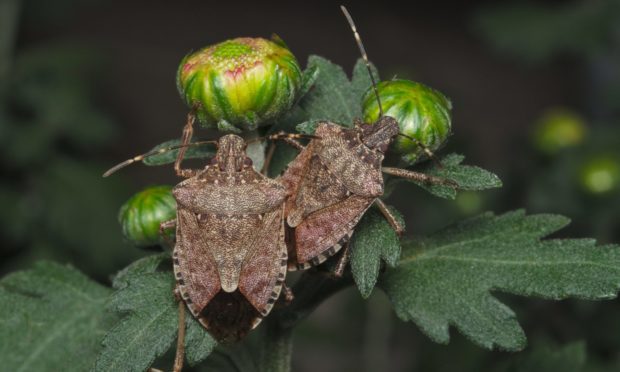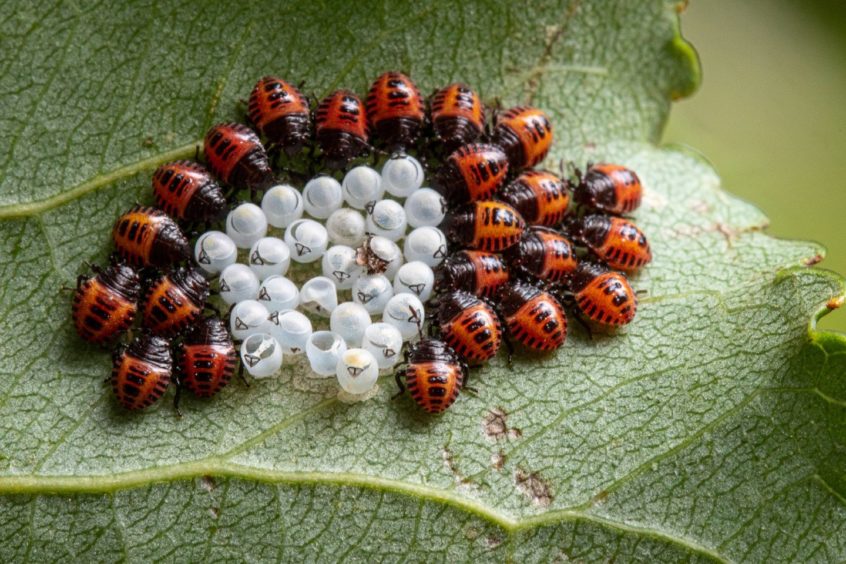Scottish growers have been warned to be on high alert for sightings of a new invasive bug which poses a threat to the fruit, vegetable, horticultural and forestry industries.
The brown marmorated stink bug which is native to China, Japan and Korea, has not been found in Scotland yet, but researchers have warned they are already present in the south of England. They have also been found across North America and mainland Europe.
Stink bugs get their name from the foul smell they exude when they feel threatened, and they cause damage to crops by piercing the surface of a plant and sucking out the juice, which distorts the produce and makes it inedible or unsellable.
Scientists warn that plants grown in polytunnels may provide an ideal habitat for the establishment of the pest, and they urge producers to monitor their crops continuously for its presence and to report any sightings to the Scottish Government’s Horticulture and Marketing Unit.
James Hutton Institute (JHI) plant scientist, Gaynor Malloch, the lead author of a report into the threat of the stink bug, said is was unlikely that it could successfully complete a generation and become established as a pest if it remains outdoors under the current outdoor temperatures experienced in Scotland.
“However, there is a possibility that it could establish if it were to spend some time indoors (e.g., in the winter months) as well as outdoors,” she said.
“If the bug appears, we would expect establishment to be slower in Scotland than the rest of the UK and there is, therefore, the potential to attempt eradication or to manage individual outbreaks carefully to prevent spread.”

